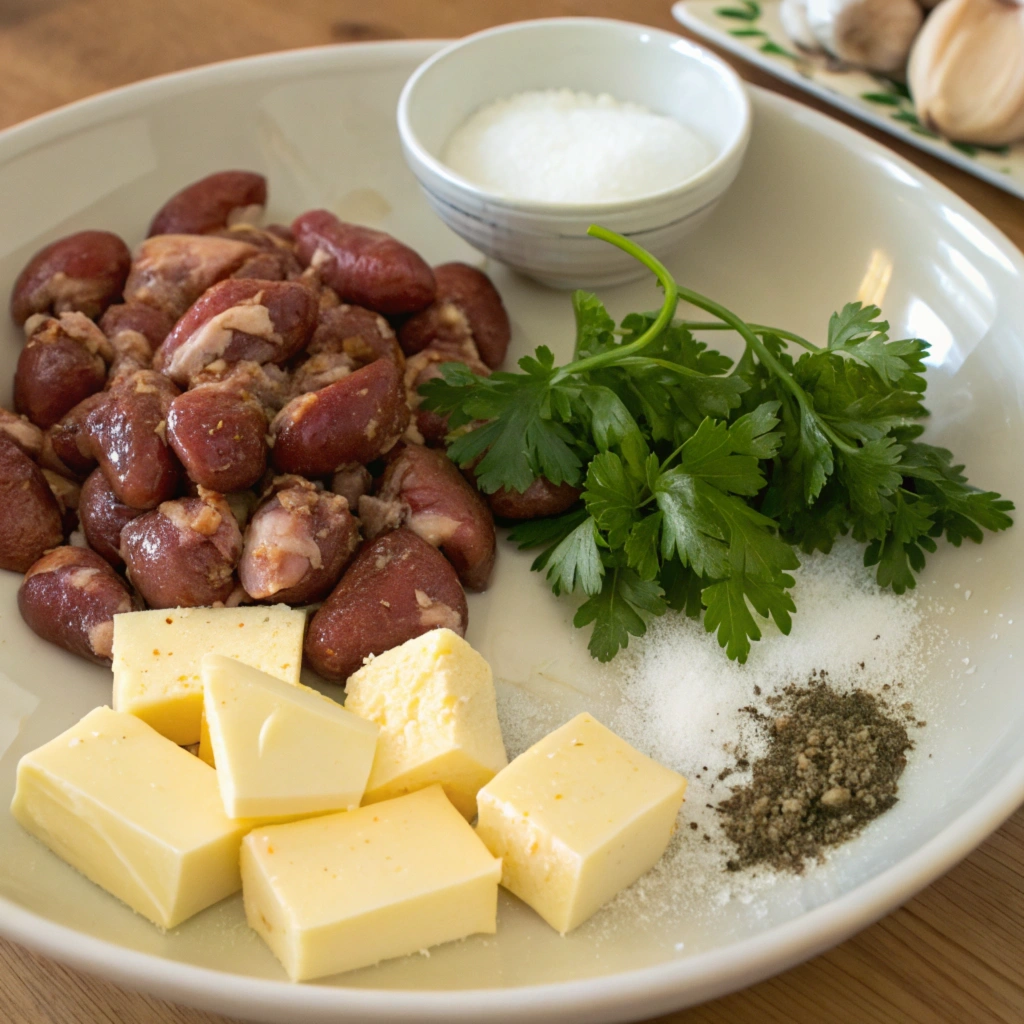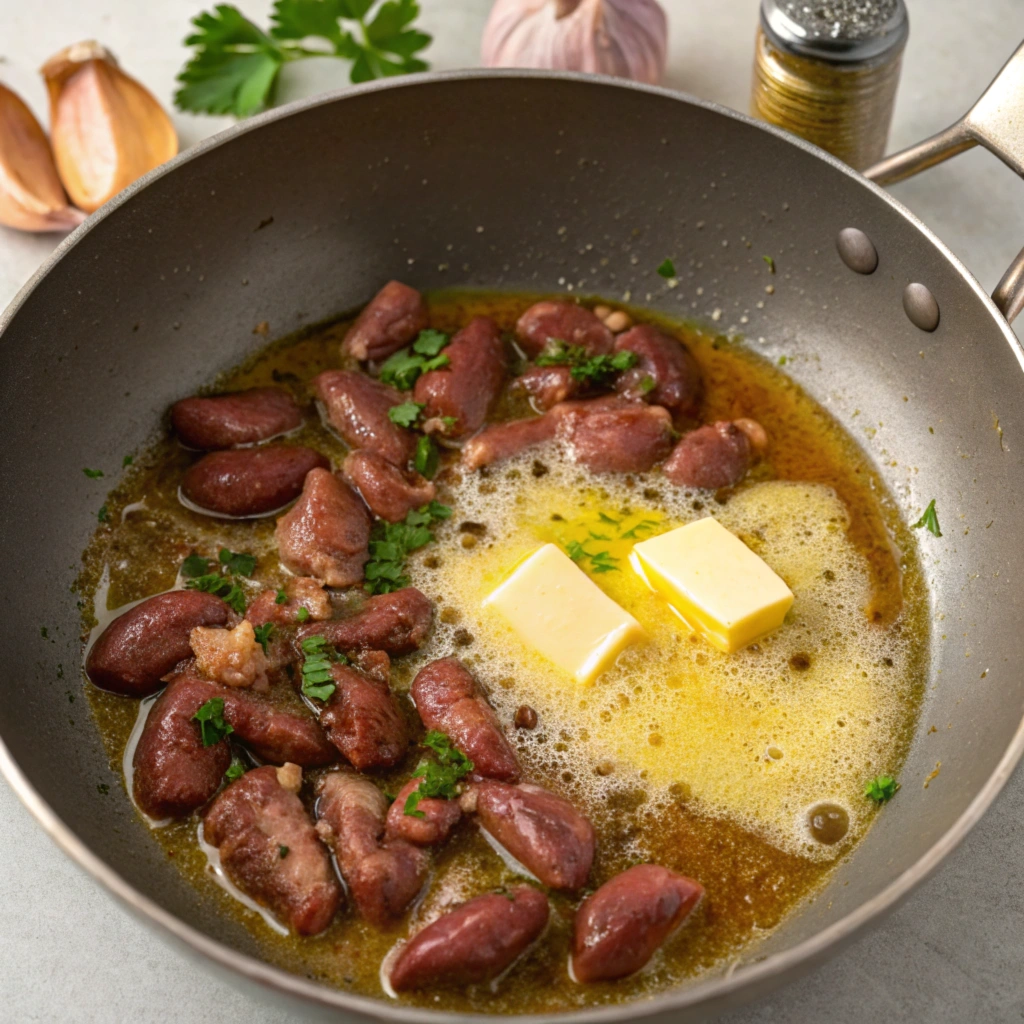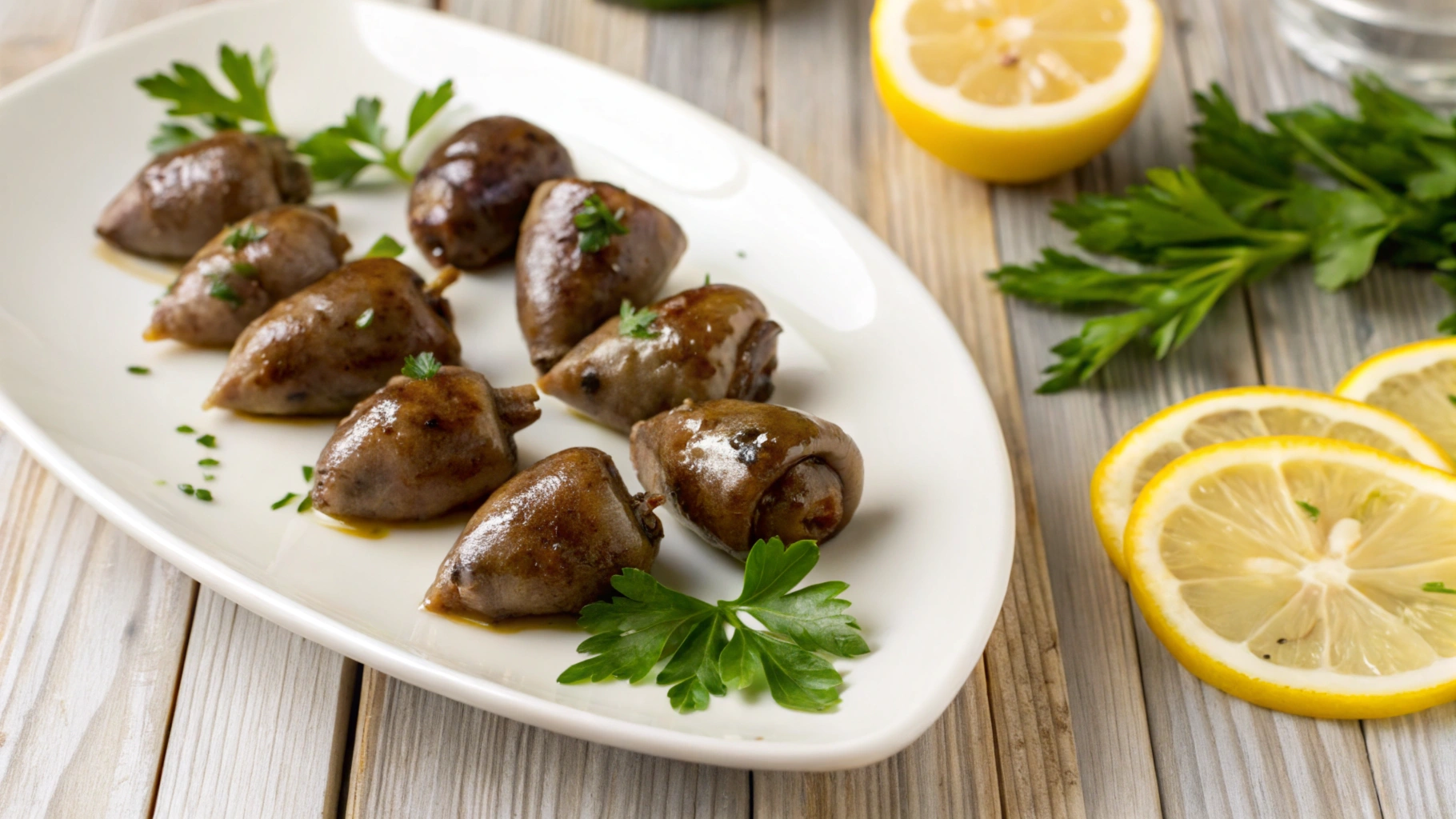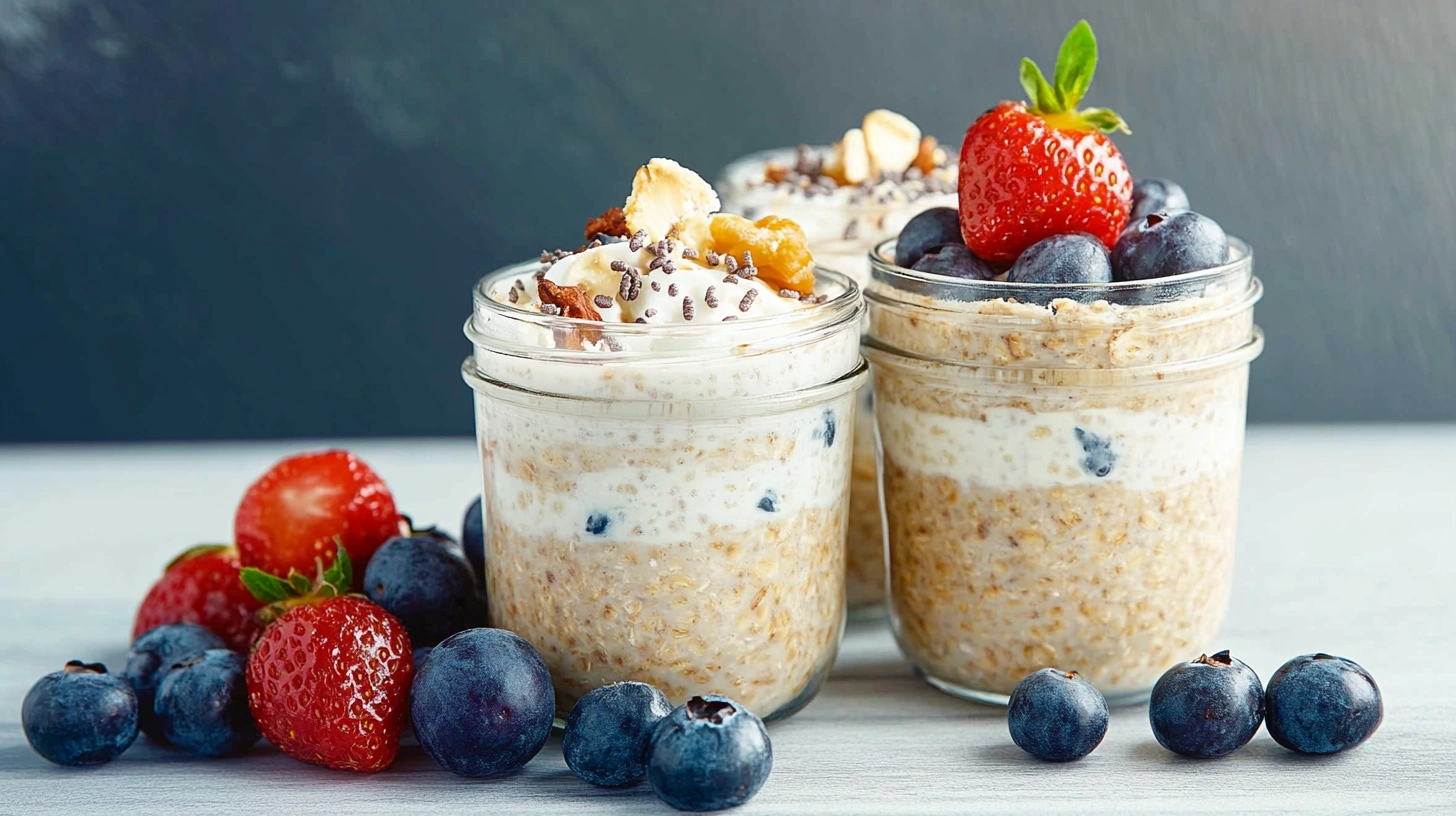Chicken hearts may not appear to be the primary food item to consider when preparing your menus, but they’re an undiscovered jewel in the kitchen. With a plethora of flavor, brimming with nutrients, and highly adaptable, these tiny but powerful organs should have their place on your table. Whether you’re an adventurous foodie or looking to boost your nutritional intake, chicken hearts can be an exciting addition to your diet.
Let’s Discover everything you need to know about flavorful hearts—what they are, how to prepare them, why they’re good for you, and even address some common FAQs.

What Are Chicken Hearts?
Chicken hearts are precisely what they sound like: the hearts of chickens. They’re tiny, typically about the size of a large grape, and have a chewy texture with a slightly gamey, rich flavor. These little organs are a staple in many global cuisines, especially in Brazil, Japan, and Southeast Asia.
They’re often sold fresh, frozen, or even pre-marinated, making them a versatile choice for cooks of all skill levels. Their size and texture make them perfect for quick cooking methods like grilling, sautéing, or stir-frying.
Why You Should Try Chicken Hearts
Chicken hearts are an excellent way to expand your culinary options. They offer affordable, simple preparation and abundant nutrition—plus, they reduce waste in the food system!
A Simple Recipe: Garlic Butter Chicken Hearts
Ingredients:

- 1 lb chicken hearts
- 2 tbsp unsalted butter
- 3 cloves garlic, minced
- 1 tsp paprika
- Salt and pepper to taste
- Fresh parsley for garnish
Instructions:

- Clean and prep the chicken hearts.
- In a large pan, heat the butter on medium-low heat, to melting the butter.
- Add the garlic and cook until fragrant.
- Toss in the chicken hearts, paprika, salt, and pepper.
- Sauté for 5-7 minutes until cooked through.
- Garnish with parsley and serve hot.
This dish is perfect as a snack or appetizer or paired with rice and veggies for a complete meal.
Chicken hearts are an underrated delicacy that’s both delicious and nutritious. They’re worth exploring in your kitchen with countless ways to prepare and enjoy them. So, why not pick up a pack and give them a try? You might find a new favorite dish!
check out this Easy Crockpot Chicken guide for inspiration.
Nutritional Benefits of Chicken Hearts
Chicken hearts aren’t just delicious. They’re a nutrition powerhouse. Here’s a reason why they should be included to your menu plan for the week:
Rich in Protein
A serving of this protein option contains high-quality protein, essential for muscle repair, immune function, and energy production.
Packed with Vitamins
Flavorful hearts are an excellent source of B vitamins, particularly B12, which support brain health and red blood cell formation.
Iron and Zinc
These minerals are crucial for oxygen transport and immune system health, and chicken hearts deliver a hefty dose of both.
Coenzyme Q10 (CoQ10)
Found naturally in this protein option, CoQ10 is a compound that supports heart health and energy production at the cellular level.
Low in Calories
Despite being nutrient-dense, flavorful hearts are low in calories, making them an excellent choice for weight-conscious eaters.
How to Prepare Chicken Hearts
Cooking chicken hearts is simpler than you might think. Here’s a step-by-step guide:
1. Clean and Prep
Before trimming away visible veins or fat, carefully wash hearts under cold water to Guarantee optimal preparation. Soaking them in milk or brine solution not only reduces their flavor but also increases tenderness–something which makes a significant impact when serving hearts to those unfamiliar with them or prefer a less tart taste. Even small changes like this one can have enormous results!
2. Choose Your Cooking Method
- Grilling: Skewer the hearts and grill them with a sprinkle of salt, pepper, and olive oil for a smoky, charred flavor.
- Sautéing: Quickly cook them in a hot pan with garlic, onions, and your favorite spices for a simple and savory dish.
- Slow Cooking: Add them to stews or soups for an irresistibly smooth texture and explosion of flavors!
3. Season Generously
Chicken hearts are delicious when cooked with strong seasonings like garlic and paprika. They increase the richness of their flavor. Additionally, they perform exceptionally when paired with soy sauce, which gives them a savory flavor and the vibrant addition of citrus to balance their smoky flavor. Also, trying different combinations of these flavors could produce unique and intriguing flavor profiles, making the chicken heart much more adaptable and tasty for various recipes.
4. Don’t Overcook
These tiny guys cook up amazingly quickly, which makes them ideal for quick and easy food preparation. However, cooking too long can cause them to become tough and chewy, making it crucial to keep an eye on them as they cook. In addition, for optimal results, try to achieve an interior temperature of around 165degF to Guarantee they’re safe to consume and soft.
Popular Dishes Featuring Chicken Hearts
Brazilian Grilled Chicken Hearts (Coração de Frango)
A well-known street food, they are usually marinated in lime juice, garlic, and olive oil prior to the time they go to the grill to create a tasty and fragrant dish. Additionally this simple marinade improves the natural sweetness of poultry hearts, while also providing the flavor of a tangy and spicy profile. In addition, grilling them over an open flame will give them an smoky flavor, making them a wonderful option for informal gatherings or outdoor barbecues.
Japanese Yakitori
Chicken hearts are skewered, brushed with a soy-based glaze, and grilled to perfection.
Chicken Heart Stir-Fry
Toss them with vegetables, soy sauce, and ginger for a quick and healthy meal.
Hearty Stews
Add this protein option to a slow-cooked stew with root vegetables, tomatoes, and herbs for a comforting dish.
Sourcing Chicken Hearts
This protein option can be found in most grocery stores, typically the frozen or specialty meat section. For fresher options, visit local butchers or ethnic markets; organic or pasture-raised varieties offer better flavor and nutrition benefits.
More Reasons to Love Chicken Hearts
If you’re still thinking about chicken hearts as a part of your daily menu, I’ll give you a few additional convincing reasons to consider them. In addition, aside from their affordability and high nutritional value, flavorful hearts are renowned for their endless variety. They also seamlessly transition from being the mainstay of gourmet-quality food to elevating the humble comfort food. Whether exploring global cuisines or sticking to your family’s favorite recipes, this protein option can be added to nearly any cuisine easily and in any style.
Cooking Chicken Hearts with Kids
Giving poultry hearts to your family, particularly children, could be a thrilling culinary experience. In addition, although the appearance of this protein option may seem odd, turning meal preparation into a fun, engaging game can encourage kids to take to new foods and be awed by them. For instance, threading hearts onto skewers to be used for grilling engages them and makes the whole process more enjoyable and hands-on. Additionally, adding vibrant vegetables like cherry peppers or bell tomatoes provides a bit of color that makes the dish appealing to the eyes. Naturally, convincing those who don’t enjoy eating food that is rich in nutrients isn’t easy, but this protein option can be both delicious and very satisfying to eat.
Chicken Hearts in Meal Prep
This protein option are unquestionably dish preparation superstars. Their tiny size makes portioning easy, and they cook extremely well without losing their flavor or texture. If you grill, sauté, or cook them up, the heart of the chicken can be stored inside air-tight containers for up to one week’s worth of meals. They are also delicious, along with quinoa, rice, or zucchini noodles, creating an energy-boosting lunch or dinner alternative. What you get is that the preparation of meals will speed up the process and provide an abundance of protein and nutrients in every bite if you include chicken hearts.
Chicken Hearts for Fitness Enthusiasts
Chicken hearts are a vital ingredient for fitness fans. They are a great source of protein B12 and iron, aiding muscle recovery, energy production, and overall endurance. Incorporating poultry hearts into post-workout meals ensures that your body receives the necessary nutrients to perform and recover. Their bioavailability is high, which makes them an ideal choice to keep active while eating a healthy diet.
Creative Ways to Flavor Chicken Hearts
Are you tired of cooking the same recipes over and over again? Worry no longer! With endless ways to flavor chicken hearts, they won’t feel repetitive any time you prepare them! From marinating in olive oil, oregano, and lemon juice for Mediterranean flair to a Korean-style marinade made of gochujang, sesame oil, and garlic or using them in creamy curries like this rich treat, small changes like these can keep poultry hearts exciting week after week!
Chicken Hearts in Cultural Celebrations
It is also fascinating to see how chicken hearts effortlessly are incorporated into celebrations all over the world. For example in Brazil they’re an essential part of festivity churrasco parties, and are often served with skewers of pork and beef and pork, which contribute to the vibrant and tasty ambience. Furthermore, in Japan poultry hearts are served place in the spotlight during special izakaya dinners, when sharing plates promotes interaction and a sense of community among diners. Furthermore, understanding the significance of culture associated with this protein option does more than just increase your appreciation of their distinctive flavor, but also increases your understanding and appreciation for their rich heritage of world culinary traditions.
How to Incorporate Chicken Hearts into Everyday Meals
Are you looking for other ways to incorporate chicken hearts into your diet? Incorporating them into your daily meals is easier than you imagine. Swap chicken breasts for poultry hearts in classic recipes like fajitas or tacos. You’ll save money while adding a unique flavor twist. Similarly, dice them finely and mix them into sauces, stir-fries, or even pasta dishes. They complement bold flavors like tomato, garlic, and chili, so they can easily blend into your existing repertoire.
Chicken Hearts for Adventurous Eaters
This protein option offer an interesting introduction to offal (organ meats). Moving to organ meats such as chicken hearts is a risky yet rewarding choice that can open new culinary possibilities. poultry hearts offer an exquisite texture and flavor that can test and expand your palate. By practicing cooking chicken heart, you may soon gain the skills to master other offal dishes such as kidneys, livers or tongue to expand your recipe repertoire even further.
Combining Chicken Hearts with Bold Sauces
One of the most effective ways to highlight the chicken heart is to pair them with strong sauces. Making simple meals into memorable meals is as simple as putting on the appropriate sauce. A smooth garlic butter sauce perfectly matches the smoky flavor of this protein option, and a smoky chimichurri adds a lively herbaceous accent. Consider a sweet mustard sauce or spicy teriyaki sauce to give sweet and savory variations. These sauces improve the taste of this protein option, making them more appealing for people who are hesitant to attempt them.
Chicken Hearts in Comfort Food Recipes
If you’re looking for ways to introduce chicken hearts to food lovers, consider incorporating them into classic recipes. For example, substitute cut-up chicken breasts with hearts in a classic pot pie or a creamy pasta bake. The flavorful taste of chicken’s heart pairs perfectly with the thick gravies and crispy crusts, giving a warm, new flavor to classic recipes. These recipes are perfect for winter evenings when you need warming and tasty food.
Chicken Hearts as a Quick Protein Option
This protein option are an excellent protein choice for busy weeknights because they cook quickly and pair well with various side dishes. Transitioning to poultry hearts as your go-to protein option can save time in the kitchen without sacrificing flavor or nutrition. Toss them into a quick stir-fry, or sauté them with garlic and onions for a simple yet delicious main course. Their small size and short cooking time make them perfect for those nights when you need dinner on the table fast.
FAQs About Chicken Hearts
Q: Do chicken hearts taste weird?
A: No! They have a light, slightly gamey taste that works well with a variety of seasonings, making their chewy texture distinct and delicious.
Q: Is chicken heart-healthy to consume?
A: So long as they’re cooked to an internal temperature of 165degF.
Q: How can I store chicken hearts?
A: Place the fresh chicken pieces in the refrigerator and take them out in a few days. If they’re frozen, they may last six to eight months.
Q Do I allow feeding of the chicken’s heart to my pet?
A: Absolutely! Chicken hearts are an excellent food item for both cats and dogs. Be sure to cook them and not season them.
Q: Are chicken hearts sustainable?
A: Chicken hearts offer a wonderful chance to try “nose to tail” cooking and reducing food waste and getting the most of every animal.
Final Thoughts on Chicken Hearts
Leap and discover why this protein option make such an outstanding food source! With their flexible affordability, cost, and health advantages, they are well worth exploring in your meal-planning routine. Skewers made of street food and the exquisite main dishes of this protein option are a great source of inspiration for creative culinary thinking. When you mix them with a range of bold flavors, try out various cuisines from all over the globe, and incorporate them into your everyday recipes, you’ll notice how versatile these tasty morsels are.







